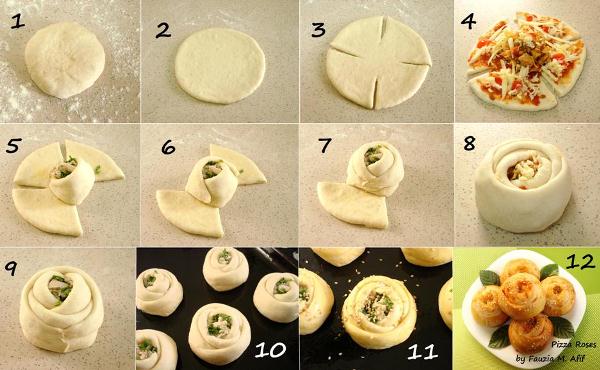
How do you write so well on social media? What can I do to speed up my writing skills?
These are two of the most common questions I’ve often been asked as a digital marketing trainer, content marketing specialist, and business blogger.
Much as I would like to attribute my prolific writing to pure genius, the awful truth is that it took a lot of blood, sweat and tears to get to where I am today.
And I’m still a long way from reaching the dizzying heights of the masters.
Thankfully, there are ways to shortcut your way to online writing nirvana.
In this article, I will cover what you need to do to achieve better outcomes in your content and social media marketing efforts.
Identify your Target Audience
First, you need to know who you are writing for.
Unless you are a social media influencer, nobody really cares about your bowel habits, breakfast-of-the-day, or other inane day to day stuff.
Instead, think about your target audiences and ask yourself these questions:
- Who are they? Think demographics, psychographics and behaviours.
- Why do they buy? Think buying behaviours and preferences.
- What do they desire?
- What are their pain points?
Once that is done, you should develop a customer persona and use that fictitious person as the object of your prose.
Courtesy of L&T
Write like How You Talk
Craft your sentences as if you are speaking them out loud. Like how I’m doing right now.
Being natural and human sounding is a good way to reduce the distance between you and your reader. Move away from obscure industry jargons that nobody understands, and pepper your prose with conversational speech.
Which lead us to our next point.
Be Succinct and Spare
Your readers are probably using a smartphone or tablet to read your content.
This means that they are likely to skim and scan your copy, rather than religiously plough through each line.
To cater to such reading habits, you need to be succinct. Cut down the fluff. Make your sentences sharper than a surgeon’s scalpel.
Learn from Stephen King’s writing mentor Leonard Elmore, who reportedly said the following:
“Kill your darlings, kill your darlings, even when it breaks your egocentric little scribbler’s heart, kill your darlings”- Elmore Leonard
Season Your Prose with Swagger
Be bold and strident when you write online. Have a strong point of view, and eliminate weak sounding weasel words in your copy.
While doing so, do be mindful not to sound patronizing or condescending. Instead, consider your audience as a peer whom you are trying to educate, entertain or enlighten.
A good example here is Bruce Lee. A prolific reader and writer – he had over 2,000 books in his home – the legendary kung fu star was well known for his brashness and confidence.
Courtesy of Bruce Lee Foundation Archive (via Brain Pickings)
Show and Tell
Unlike writing for books or magazines, online writing needs to be both descriptive and prescriptive.
In other words, you need to both show and tell.
Here’s an example of what I mean:
- Telling: John Lee is a great writer of Chinese historical fiction.
- Showing: John Lee described the scene from 18th century China with much flourish, illustrating how the Manchu kings ruled the Chinese subcontinent with an iron fist during the Qing Dynasty.
Use Strong Verbs
Remember that your readers are easily distracted online. Hence, you’ll need to captivate them with strong verbs that clearly show the action. Here are two examples of strong versus weak verbs.
- Weak Verbs: A lazy girl, Wendy often had to run for her bus on the way to school each day.
- Strong Verbs: Slothful Wendy zoomed down the street to catch her only bus to school each day.
Pick Specific Nouns
To make your content more compelling, opt for specific concrete nouns which help your readers paint mental pictures in their heads. The more specific you are, the better your writing would be.
See the examples below to understand what I mean:
- Abstract Nouns (avoid): Flora, Animal, Transportation, Accommodation
- Concrete Nouns (better): Tree, Dog, Car, House
- Specific Concrete (best): Angsana Tree, German Shepherd, Porsche 911, 4-Room HDB Flat
Kill Jargons and Pompous Words
Unless you are writing for the queen, avoid using arcane and bombastic words in your content. Remember that you should write like how you speak.
Here are some overblown words that you should try to avoid (taken from The Pompous Ass Words website). See how many you can identify!
| Juxtaposition | Extemporaneous | Attenuate | Verbosity | Anachronistic |
| Ebullient | Moribund | Coruscating | Antediluvian | Pertinacious |
| Obstreperous | Febrile | Antipodal | Niggardly | Sesquipedalian |
Spell Out Acronyms the First Time
I know that this is somewhat basic, but you’ll be amazed by how often this rule is omitted by online writers.
Spelling out acronyms is critical as you’re likely to be reaching out to a global audience online; the same acronym could mean different things in different countries.
Break Down Your Wall of Text
A wall of text is an ugly thing on an iPhone or an Android device. Rather than write in long and meandering chunks, use the following tactics to make your content easier to read.
a) Use Headings and Subheads
Headings (or titles) and subheadings (aka subheads) help your readers to zoom in to what they wish to read. They can also help you to structure your thoughts in a systematic fashion.
b) Bite the Bullets
Bullet points work very well online because…
- They are quick to read
- They are easy to follow
- They help your reader’s eyes to travel more quickly
- They reduce the strain of reading long paragraphs
- See what I mean?
c) Use Numbers for Sequences
If you are writing an instructional guide, you may use numbers to move your reader through a series of steps. Here’s how:
- Lay out the different actions needed to accomplish the task
- Organise them from the start to the finish
- Write down the subheads for each step
- Fill in the detailed body text for each
- Include a visual to make it come alive
Harness Hard Hitting Headlines
Other than you cover image or video, headlines are vital in leaving a positive first impression on your audience.
According to Ann Handley, you should spend 80 percent of your time writing your headlines and 20 percent on everything else! In the attention starved world of marketing, your headline needs to stand out in the sea of words and ideas.
Here are some ways to craft irresistible headlines that your readers want to read:
- Find the time to rhyme (eg “Woes Unite Foes”)
- Use a pun or two (eg “An Eggs-traordinary Way To Cook Omelettes”)
- Include numbers (eg “23 Ways to Make More Pocket Money During Your School Holidays”)
- Put your reader into the headline (eg “Content Marketers Guide to Better Online Writing”)
- Use metaphors (eg “Is the Grass always Greener on the Other Side?”
- Refer to popular culture (eg “How Would Taylor Swift Write a Love Story?”)
Is this a good headline? (Source of image)
Follow with a Strong Lead
Beyond your headlines, you need to write a strong lead in paragraph (also known as a lede) to draw your audience in.
According to the Purdue Online Writing Lab, strong leads contain the following:
- Five W’s and H: Who, What, When, Where, Why and How.
- Conflict: Create a point of contention to arouse your readers.
- Specificity: The more precise you are, the better your effect on readers.
- Brevity: Three sentences are good, two better, and one best.
- Active sentences: Like the rest of your prose, make it active and speak directly to your reader.
- Audience and context: Consider what your reader knows or would have read. Is there something that came out in the news recently (eg newsjacking)? Or can you tie to your readers own experience at work or in life?
- Honesty: A lead is a promise to your reader. Don’t be an ass hat by misleading them.
Stick to One Point Per Paragraph
One of the most important writing lessons in my life came from one of my bosses over 20 years ago. It boiled down to these few words:
“Stick to one point for each paragraph.”
Since then, I’ve always written with that in mind. I’d like you to do so too!
Always Include an Image (or Three)
A picture paints a thousand words. In the highly cluttered online world, visuals rule. Just read these visual marketing statistics to see what I mean.
When selecting your image, consider the following points:
- Match your image to your content brand. If you’re writing about luxury products, you’ll need to select beautifully taken photographs with the right composition, lighting and mood to suit your content.
- Use visuals to improve comprehension. It is usually easier to grasp information from a chart or a graph than a series of texts.
- Show a Process. Visuals are great to show a step-by-step process. For example, consider how you are going to convey the following recipe for a Pizza Rose without images!
Courtesy of Goods Home Design
Include Relevant Links
The beauty of the Web is that you can link to virtually anything and everything out there. From a Search Engine Optimization (SEO) perspective, incorporating internal links to your website’s content can further strengthen your web traffic.
However, don’t just include a link just for the sake of link building. Nobody likes to be led down a rabbit hole without a bounty at the end of the tunnel.
Instead, think about linking to content that supports what you’ve written:
- Examples that can support your topic
- Detailed tutorials and explanations that are too wordy to include
- Related topics that may be of interest to your reader
- Resources (especially authoritative ones) that could benefit your reader
- Giving credit to images, videos, or other sources of information which you’ve used
End with a Bang!
Yes, you need to end off your writing with a strong Call To Action (CTA) that either invites your audience to participate, provide them with an irresistible offer, or entices them to follow you for more.
Wait! I’m not done yet…
What I’ve written above are just some basic pointers to good writing.
As you’d imagine, there is a lot more that you can learn about writing like an online rockstar. Here are some useful links to writing blogs that you can read from:
- Grammarly
- Copyblogger
- Goins, Writer
- Terrible Minds
- Daily Writing Tips
- The Writers’ Academy
- The Write Life
- Better Novel Project
- Writer’s Digest
- The Book Designer
- Well-Storied
FREE: 60-Minute Consultation Where I Review Your Online Copy
Fill in the contact form below for a free 60-minute Skype or Zoom consultation session where I’ll guide you through what needs to be done to improve your website, social media profiles or emails!
One Comment
Comments are closed.






In this digital era, the content has great value. The SEO specialist says Content is king.